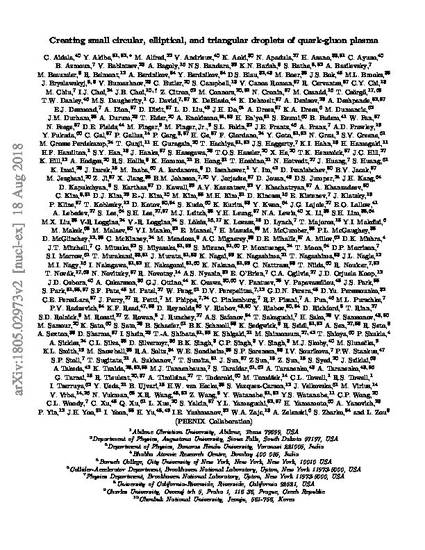
Experimental studies of the collisions of heavy nuclei at relativistic energies have established the properties of the quark–gluon plasma (QGP), a state of hot, dense nuclear matter in which quarks and gluons are not bound into hadrons 1–4 . In this state, matter behaves as a nearly inviscid fluid 5 that efficiently translates initial spatial anisotropies into correlated momentum anisotropies among the particles produced, creating a common velocity field pattern known as collective flow. In recent years, comparable momentum anisotropies have been measured in small-system proton–proton (p+p) and proton–nucleus (p+A) collisions, despite expectations that the volume and lifetime of the medium produced would be too small to form a QGP. Here we report on the observation of elliptic and triangular flow patterns of charged particles produced in proton–gold (p+Au), deuteron–gold (d+Au) and helium–gold ( 3 He+Au) collisions at a nucleon–nucleon centre-of-mass energy sNN = 200 GeV. The unique combination of three distinct initial geometries and two flow patterns provides unprecedented model discrimination. Hydrodynamical models, which include the formation of a short-lived QGP droplet, provide the best simultaneous description of these measurements.
Available at: http://works.bepress.com/craig-ogilvie/283/

This is a manuscript of an article published as Aidala, C., Y. Akiba, M. Alfred, V. Andrieux, K. Aoki, N. Apadula et al. "Creation of quark–gluon plasma droplets with three distinct geometries." Nature Physics 15 (2019): 214-220. DOI: 10.1038/s41567-018-0360-0. Posted with permission.